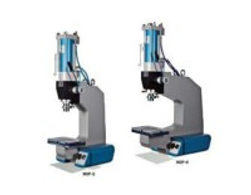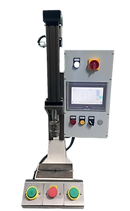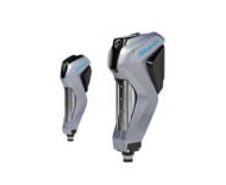- changdeliequip
- May 8, 2024
- 3 min read

Pneumatic toggle presses are powerful tools vital in manufacturing and industrial processes. These machines use compressed air to exert force, which makes them efficient and versatile for various applications. However, like any machinery, pneumatic toggle presses require careful handling to ensure the safety of operators and maintain optimal performance.
Understanding the Basics of the pneumatic toggle press
Before operating a pneumatic toggle press, it's essential to have a thorough understanding of its components and how it functions. Familiarize yourself with the machine's operating manual and safety guidelines provided by the manufacturer. Here are some key components to be aware of:
Toggle Mechanism: The toggle mechanism amplifies the force generated by the compressed air, allowing the press to exert high pressure.
Control Panel: The control panel contains buttons or switches for starting, stopping, and controlling the operation of the press. Ensure that you understand how to operate these controls safely.
Safety Features: Pneumatic toggle presses are equipped with safety features such as emergency stop buttons, safety guards, and light curtains to prevent accidents. Please familiarize yourself with these features and their functions.
Pre-Operation Checks
Before using a pneumatic toggle press supplier, perform the following checks to ensure that it is in good working condition:
Visual Inspection: Inspect the press for any signs of damage, wear, or loose components. Pay attention to the toggle mechanism, control panel, hoses, and safety guards.
Air Supply: Check the compressed air supply to ensure it is clean, dry, and at the correct pressure level, as the manufacturer recommends.
Tooling: Ensure that the appropriate tooling is installed securely and is compatible with the press. Inspect the tooling for any defects or damage that could affect its performance.
Safety Devices: Verify that all safety devices, such as emergency stop buttons and safety guards, are functional and in place.
Operating Procedures
When operating a pneumatic toggle press, follow these best practices to ensure safety and efficiency:
Positioning: Stand clear of the press and ensure no obstructions. Position yourself in a safe location with a clear view of the press and its operation.
Loading: Carefully place the material to be pressed into the appropriate position on the press bed. Ensure the material is aligned correctly and secured to prevent it from shifting during operation.
Starting the Press: Activate the press using the control panel or start button. Use gentle pressure on the controls to initiate the pressing cycle. Avoid sudden or excessive force that could cause the press to malfunction or damage the material.
Monitoring: Stay alert and monitor the press throughout the operation. Pay attention to unusual noises, vibrations, or movements that could indicate a problem. Stop the press immediately and investigate the issue if you observe any abnormalities.
Emergency Procedures: Familiarize yourself with the emergency stop procedures and location of emergency stop buttons. In the event of an emergency or malfunction, press the emergency stop button to halt the press's operation and prevent further risks.
Post-Operation Checks
After completing the pressing operation, follow these steps to ensure that the press is safely shut down and ready for subsequent use:
Shutdown Procedure: Turn off the press using the control panel or stop button. Allow the press to complete its cycle and come to a complete stop before proceeding.
Unload the Material: Carefully remove the pressed material from the press bed, avoiding sharp edges or hot surfaces.
Inspect the Press: Perform a visual inspection to ensure it is in good condition. Check for any signs of damage, wear, or abnormalities requiring attention.
Maintenance: Follow the manufacturer's recommendations for regular maintenance and servicing of the press. This may include lubrication, cleaning, and inspection of critical components.
Conclusion
Operating pneumatic toggle press requires careful attention to detail, proper training, and adherence to established safety procedures. By understanding the basics of press operation, conducting pre-operation checks, following best practices during operation, and performing post-operation checks, operators can minimize risks and ensure the safe and efficient use of pneumatic toggle presses in manufacturing and industrial settings. Remember, safety always comes first.




